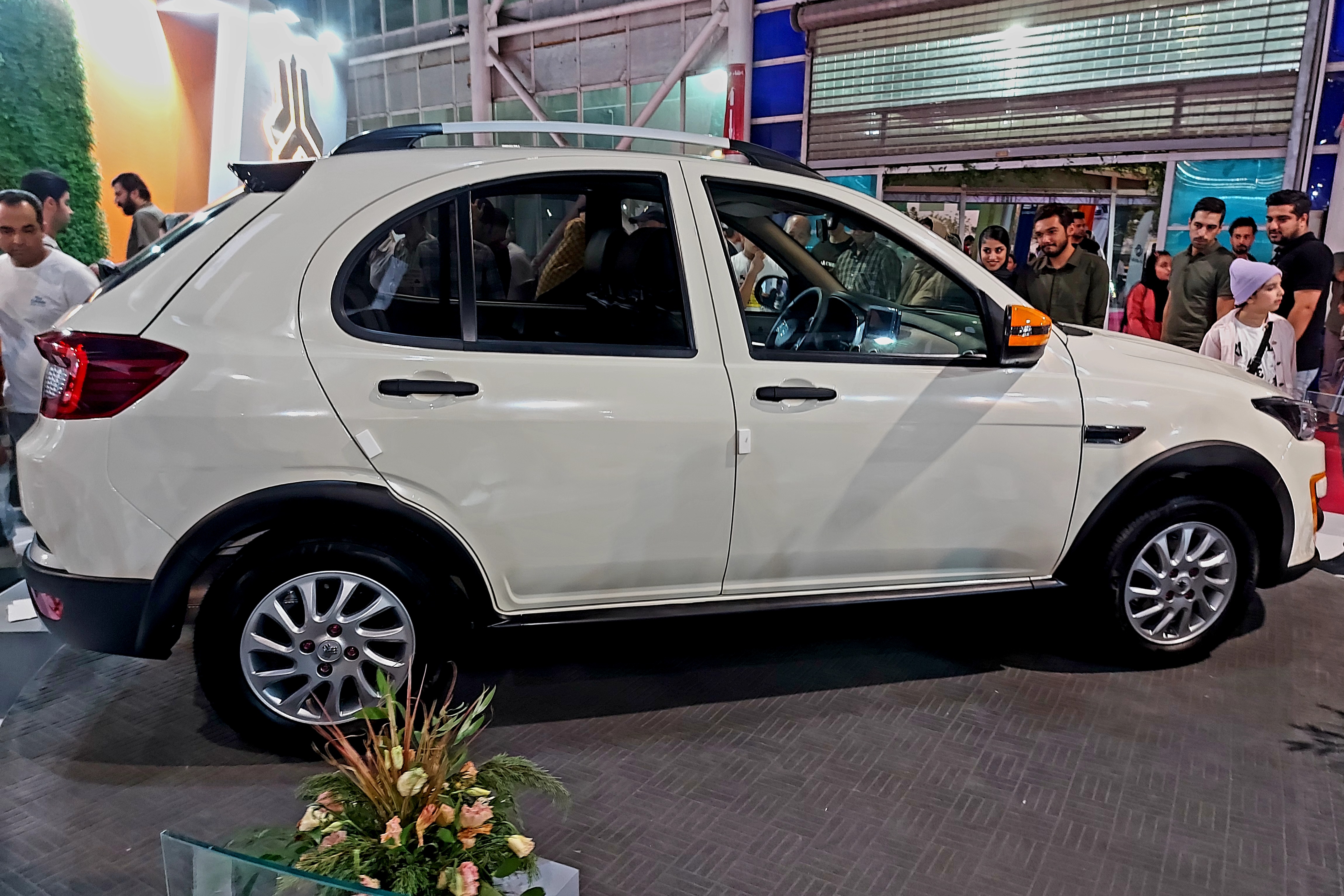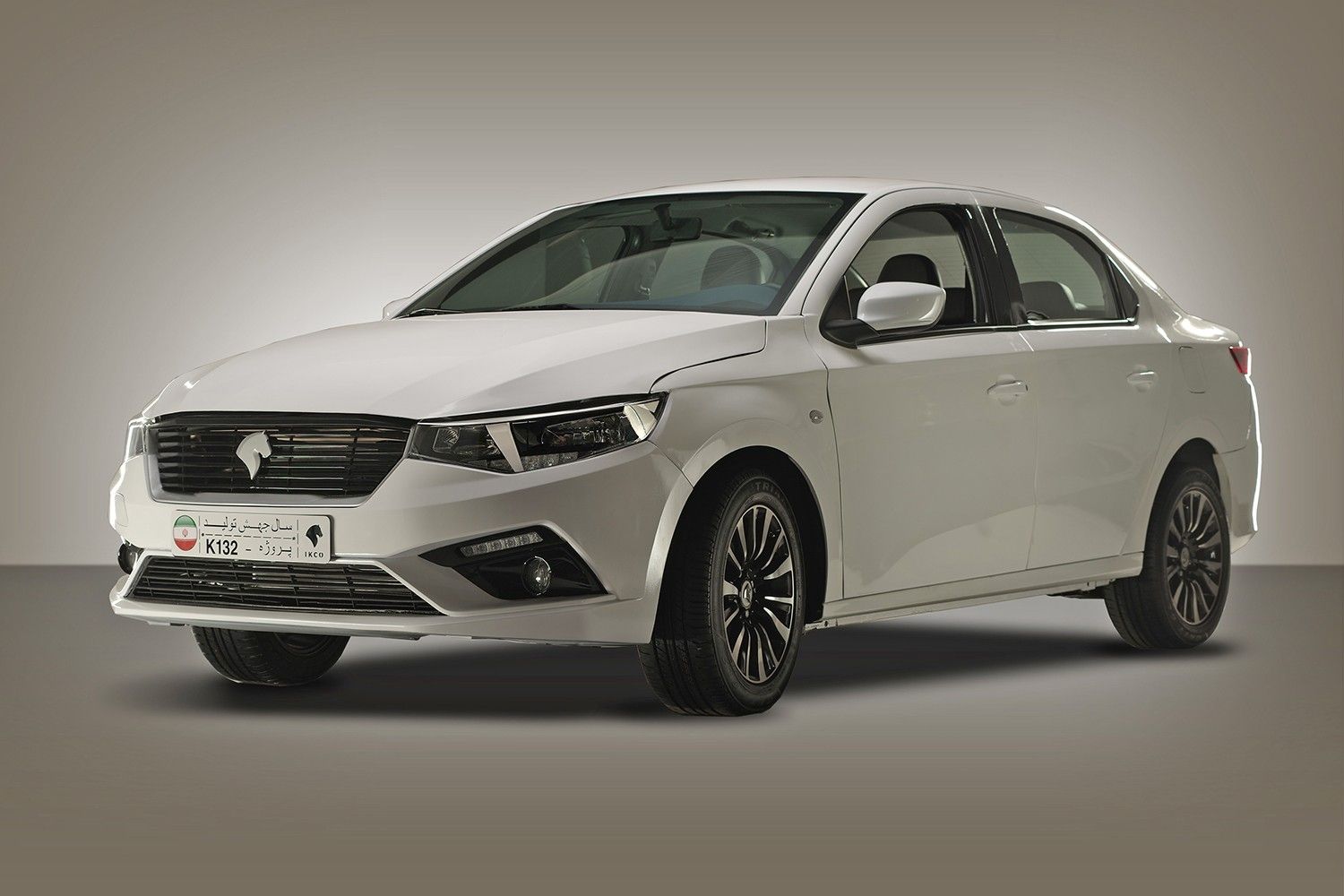Inside Iran’s Auto Industry: Best-Selling Cars in Iran
Iran’s automotive industry stands distinctively apart from the global market. Unlike most countries that depend heavily on imports, Iran takes pride in manufacturing cars entirely from locally sourced materials. Prominent Iranian brands such as Iran Khodro and SAIPA have successfully established themselves as completely homegrown automakers, thriving without relying on imported components.
Following our previous exploration of the most popular cars in Pakistan, this blog delves into Iran’s automotive scene. We’ll highlight six of the best-selling Iranian-made vehicles currently in production. For each model, we’ll discover why local buyers prefer them, examine their key specifications, and gain insights into Iran’s unique automotive trends.
Saipa Atlas – Budget Hatchback Hero

The Saipa Atlas is a compact hatchback that has become a common sight on Iranian roads. The Atlas is essentially the modern successor to the old Kia Pride-based models. It’s hugely popular among Iranian consumers for one simple reason: affordability. With the discontinuation of the Pride, SAIPA needed a cheap, efficient city car – and the Atlas fits the bill.
Its low price and decent fuel economy make it an attractive first car for young families and commuters on a budget. It’s selling very well, and many see it as the car that will fill the gap left by the Pride/Tiba family. In short, the Atlas is popular because it’s the least expensive way to get a new car in Iran, with easy maintenance and widely available parts.
Here are some key specs:
- Engine: 1.5 L inline-4 (naturally aspirated), ~87 hp output
- Fuel Type: Gasoline (petrol)
- Transmission: 5-speed manual or CVT automatic (for higher trims)
- Horsepower: ~87 hp (65 kW) @ ~5800 rpm
- Notable Features: Dual front airbags, ABS brakes, a basic 7″ infotainment screen in newer models, and very high fuel efficiency (~7 L/100 km). It’s built on the old Pride platform, so it’s compact and easy to maneuver in city traffic.
Iran Khodro Samand – National Sedan

Iran Khodro’s Samand is often referred to as Iran’s first “national car,” and it holds a special place in the market. Launched in the early 2000s as a successor to the venerable Paykan, the Samand has been popular for decades – and impressively, it’s still in production (in facelifted forms like the Samand Soren). Iranian consumers appreciate the Samand for its roomy interior and robustness.
Over the years, Iran Khodro kept improving it with better engines and features, so even though the design is dated, it’s proven reliable for local conditions. The Samand has also been a favorite of taxi drivers and government fleets due to its simple mechanics and availability of parts.
Key specifications of Iran Khodro Samand:
- Engine: 1.7 L EF7 inline-4 (petrol) – an Iranian-designed engine (~113 hp). Older models used a Peugeot-derived 1.8 L (100 hp) or 1.6 L (110 hp).
- Fuel Type: Gasoline, with CNG bi-fuel versions common (the Samand often comes in dual-fuel variants for cost savings).
- Transmission: 5-speed manual.
- Horsepower: ~113 hp with the 1.7 L NA engine (or ~100–110 hp in older engine options). Torque is on the order of 150 Nm for petrol.
- Notable Features: Sturdy suspension (suited to Iran’s road conditions), spacious cabin and trunk, available in various trims (LX, SE, Soren) with incremental improvements. Safety features are basic (airbags, ABS in later years). The Samand’s platform is a modified Peugeot 405 chassis, so it has a classic front-engine, FWD sedan layout.
IKCO Dena – Iranian Family Car

The Dena is Iran Khodro’s attempt at a more upmarket national sedan, and it has struck a chord with buyers looking for style and power in a locally-made car. Introduced in the mid-2010s, the Dena Atlasly became one of IKCO’s best-sellers due to its sharp design, larger size, and relatively powerful engine. In fact, the turbocharged version (Dena Plus Turbo) is often cited as one of the best Iranian cars on offer today.
Iranian consumers appreciate that the Dena offers a bit more luxury and tech than older models – things like improved interior materials, a multimedia touchscreen, and better safety features. It’s also known as the most expensive car made by IKCO (still far cheaper than any import), yet it sells very well. Enthusiasm for the Dena has kept it near the top of the sales charts; at one point it was IKCO’s top model. It’s essentially a heavily facelifted evolution of the Samand’s platform, but you wouldn’t guess that from its modern looks.
For many in Iran, the Dena is a home-grown alternative to a Toyota or Hyundai sedan – offering decent comfort and performance at a fraction of the cost (thanks to import bans).
Main highlights:
- Engine: 1.7 L EF7 naturally-aspirated I4 (~113 hp), or 1.7 L EF7-TC turbo I4 (~150 hp in Plus Turbo variant). The Dena Plus Turbo Automatic is the flagship version.
- Fuel Type: Petrol (with some models capable of CNG dual-fuel, though the Turbo is petrol-only).
- Transmission: 5-speed manual standard; 6-speed automatic available in Dena+ trims. (The Turbo models often pair with an automatic gearbox).
- Horsepower: ~113 hp for the base Dena, and around 150 hp for the Turbo version (which significantly boosts acceleration).
- Notable Features: Dual front airbags (plus side airbags in newer Plus models), ABS and EBD brakes, touchscreen infotainment, automatic climate control, and available options like keyless entry and a sunroof in luxury trims. It’s built on the Samand’s chassis, but heavily updated – offering a quieter ride and more amenities.
Peugeot 207i (IKCO) – Little Lion

It might carry the French Peugeot badge, but make no mistake: the 207i is as Iranian as they come, built by Iran Khodro for years. Essentially a locally produced, facelifted Peugeot 206+, the “207i” has long been hugely popular among younger drivers and city-dwellers in Iran.
Why is it so popular? For one, it offers a compact size and sporty flair that other domestic cars don’t. When the Peugeot 206 first hit Iran in the early 2000s, it was seen as a modern, stylish hatchback – and its legacy lives on in the 207i. Iranians love that it’s nimble in traffic, easy to park, and has a bit of Euro-style chic.
Over time, IKCO kept the model alive by updating the interior and tech (adding things like a touchscreen and even a panoramic roof in some versions).
Key specs of Peugeot 207i:
- Engine: 1.6 L TU5 inline-4 (16-valve), ~105–113 hp (the latest versions have about 113 hp with variable valve timing).
- Fuel Type: Petrol.
- Transmission: 5-speed manual is common, and a 4-speed automatic (or recently a 6-speed automatic) is offered – automatics are popular for city use.
- Horsepower: ~105 hp (older) up to ~113 hp (newer update) – Torque around 142 Nm. This gives the little 207i peppy performance for its size.
- Notable Features: Being a modern hatch, it comes with dual airbags and ABS as standard. Newer trims include a touchscreen infotainment, reverse camera, and even options like a glass roof. Its compact hatchback body makes it light on its feet. There’s also a sedan variant (sometimes called 207i Sedan, essentially a 206 SD with the new front fascia). Styling features like alloy wheels and LED lights on higher trims appeal to younger buyers.
Saipa Shahin – Newcomer with Turbo Power

The Saipa Shahin is one of the newest sedans from SAIPA and represents a bold step forward for the Iranian auto industry. Launched in late 2020, the Shahin is a compact C-segment sedan that immediately drew attention for its modern design and the fact that it’s turbocharged.
Iranian consumers had high hopes for the Shahin – and largely, it has delivered in popularity. Buyers are attracted to the Shahin’s contemporary look (it’s arguably one of the best-looking Iranian cars, with a sleek body and a distinctive front grille) and its feature set.
It offers conveniences like a push-button start and touchscreen that were rare on earlier domestics. Affordability is also key: the Shahin provides a lot of car for the money (it undercuts similar foreign sedans significantly on price).
Key specifications:
- Engine: 1.5 L M15TC turbocharged inline-4, 8-valve (developed by SAIPA).
- Fuel Type: Petrol (Euro 5 emissions compliant).
- Transmission: 5-speed manual is standard; a CVT automatic is now offered (though full 6-speed auto was planned, the current automatic option is a CVT gearbox).
- Horsepower: 110 hp (82 kW) from the 1.5L turbo, with 178 Nm of torque – giving it good mid-range punch.
- Notable Features: The Shahin comes well-equipped for an Iranian car: push-button start, keyless entry, 7″ infotainment system, rear parking camera, tire-pressure monitoring, and two airbags are included. It also has modern safety like ABS + EBD and (reportedly) electronic stability control in newer batches. The platform is new – it’s said to be an upgraded version of a Toyota-designed platform – hence the car feels more up-to-date in ride and handling.
Iran Khodro Tara – New Generation Family Sedan

The Iran Khodro Tara on display – a modern compact sedan based on Peugeot underpinnings. The IKCO Tara is a very important model for Iran Khodro, as it represents the company’s future. Introduced in 2021, the Tara is essentially Iran’s domestically-built version of the Peugeot 301/Citroën C-Elysée.
Among Iranian consumers, the Tara has gained traction for being a truly modern car by local standards – it was designed in the last few years and comes with contemporary safety and comfort features. In terms of popularity, the Tara has been steadily climbing the charts; it broke into the Top 10 in 2023 and kept rising, reaching 7th in production by 2024. Buyers like its European pedigree (knowing it’s based on a Peugeot gives some confidence in the engineering) and the fact that it’s larger and more advanced than the trusty Samand or Dena.
The Tara offers a roomy cabin, good fuel efficiency, and a more polished look that appeals to middle-class families and even fleet buyers. With the aging Peugeot Pars/405 discontinued in 2024, the Tara is essentially the successor carrying the torch for IKCO’s sedan lineup.
Key features ofI ran Khodro Tara :
- Engine: 1.6 L TU5P inline-4 (also called EC5), which is a modernized Peugeot engine with variable valve timing.
- Fuel Type: Petrol.
- Transmission: 5-speed manual or 6-speed automatic available. (Early Taras had 5MT, but now a smooth 6AT is offered on higher trims, catering to demand for automatics.)
- Horsepower: 113 hp (85 kW) @ ~5800 rpm, with ~144 Nm torque – comparable to mid-range global compacts.
- Notable Features: The Tara comes with a good safety suite by local standards – dual airbags, ABS, and importantly Electronic Stability Control (a first for an IKCO sedan). It has rear parking sensors/camera, touchscreen infotainment, automatic A/C, and even options like a sunroof in the new “Tara V3/V4” luxury variants. Build quality is improved, and IKCO claims a high percentage of local content. Essentially, it’s the most modern platform under an IKCO badge, shared with Peugeot’s 208/2008 family.
Let us know what you think about these Iranian cars?


